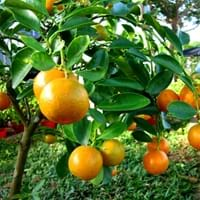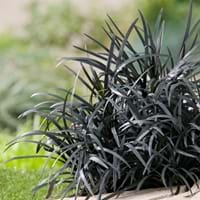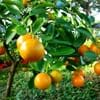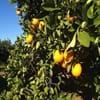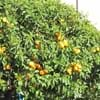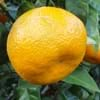Life Span
Perennial
Perennial
Origin
Southeastern Asia, Japan
China, Japan, Korea
Types
Clementines, dancy, fallglo, lee
Not Available
Habitat
Subtropical climates, Tropical regions
Damp shady woods, foothill woods, Lowland
USDA Hardiness Zone
8-11
7-10
Sunset Zone
H1, H2, 8, 9, 12, 13, 14, 15, 16, 17, 18, 19, 20, 21, 22, 23, 24
H1, H2, 5, 6, 7, 8, 9, 14, 15, 16, 17, 18, 19, 20, 21, 22, 23, 24
Habit
Oval or Rounded
Clump-Forming
Flower Color
White, Red, Purple
White, Lavender
Flower Color Modifier
Bicolor
Bicolor
Fruit Color
Green, Orange
Blue Violet
Leaf Color in Spring
Green, Dark Green
Black
Leaf Color in Summer
Green, Dark Green
Black
Leaf Color in Fall
Green, Dark Green
Gray
Leaf Color in Winter
Light Green
Black
Leaf Shape
Lance shaped
Grass like
Plant Season
Spring, Summer, Fall, Winter
Spring, Summer, Fall, Winter
Sunlight
Full Sun, Partial Sun
Full Sun, Partial Sun, Partial shade
Growth Rate
Medium
Medium
Type of Soil
Loam, Sand
Loam
The pH of Soil
Acidic, Neutral
Acidic, Neutral
Soil Drainage
Well drained
Well drained
Bloom Time
Spring, Late Spring, Early Summer
Summer
Tolerances
Drought
Drought
Where to Plant?
Ground
Ground
How to Plant?
Grafting, Seedlings
Root Division
Plant Maintenance
Medium
Medium
Watering Requirements
Average Water Needs, occasional watering once established, Water more in summer
Regular watering during dry periods
In Summer
Lots of watering
Lots of watering
In Spring
Moderate
Moderate
In Winter
Average Water
Average Water
Soil pH
Acidic, Neutral
Acidic, Neutral
Soil Type
Loam, Sand
Loam
Soil Drainage Capacity
Well drained
Well drained
Sun Exposure
Full Sun, Partial Sun
Full Sun, Partial Sun, Partial shade
Pruning
Remove damaged leaves, Remove dead branches, Remove dead leaves, Requires little pruning
Remove damaged leaves, Remove dead branches, Remove dead leaves
Fertilizers
20-10-10, All-Purpose Liquid Fertilizer
All-Purpose Liquid Fertilizer
Pests and Diseases
Aphids, Beetles, Earwigs, Leafminers, Red blotch
Not Available
Plant Tolerance
Cold climate, Drought
Drought
Flower Petal Number
Single
Single
Fragrant Bark/Stem
Yes
No
Foliage Texture
Medium
Medium
Foliage Sheen
Glossy
Matte
Attracts
Beetles, Birds, Butterflies, Insects, Leaf Hoppers, Rabbits
Hummingbirds
Allergy
no allergic reactions
Asthma
Aesthetic Uses
Not Used For Aesthetic Purpose
Borders
Beauty Benefits
Glowing Skin, Skin Problems
Not Available
Environmental Uses
Air purification
Air purification
Medicinal Uses
Aging, Antioxidants, High blood pressure, High cholestrol, Skin Disorders
Antipyretic, Antiscrophulatic, Antitussive, Aphrodisiac
Part of Plant Used
Fruits
Root
Other Uses
Used for its medicinal properties
useful as a ground cover
Used As Indoor Plant
Yes
No
Used As Outdoor Plant
Yes
Yes
Garden Design
Container, Edible, Feature Plant, Fruit / Fruit Tree, Hedges, Houseplant, Mixed Border, Topiary / Bonsai / Espalier
Container, Edging, Groundcover, Lawns and Turf, Mixed Border, Rock Garden, Wall
Botanical Name
CITRUS reticulata 'Armstrong'
Ophiopogon planiscapus 'Nigrescens'
Common Name
Armstrong Tangerine, Tangerine
Black Mondo Grass, black mondo
In Hindi
संतरा
Black Mondo Grass
In German
Mandarine
Mondo Gras Busch
In French
mandarine
Black Mondo Grass
In Spanish
mandarina
entre el césped
In Greek
μανταρίνι
Black Mondo Grass
In Portuguese
tangerina
Black Mondo Grass
In Polish
mandarynka
Black Mondo Grass
In Latin
Tangerine
Black Mondo Grass
Phylum
Magnoliophyta
Embryophyta
Class
Magnoliopsida
Liliopsida
Order
Sapindales
Liliales
Family
Rutaceae
Liliaceae
Clade
Angiosperms, Eudicots, Rosids
Angiosperms, Monocots
Tribe
Not Available
Not Available
Subfamily
Not Available
Not Available
Number of Species
Not Available
Not Available
Season and Care of Tangerine and Black Mondo Grass
Season and care of Tangerine and Black Mondo Grass is important to know. While considering everything about Tangerine and Black Mondo Grass Care, growing season is an essential factor. Tangerine season is Spring, Summer, Fall and Winter and Black Mondo Grass season is Spring, Summer, Fall and Winter. The type of soil for Tangerine is Loam, Sand and for Black Mondo Grass is Loam while the PH of soil for Tangerine is Acidic, Neutral and for Black Mondo Grass is Acidic, Neutral.
Tangerine and Black Mondo Grass Physical Information
Tangerine and Black Mondo Grass physical information is very important for comparison. Tangerine height is 300.00 cm and width 300.00 cm whereas Black Mondo Grass height is 20.30 cm and width 30.50 cm. The color specification of Tangerine and Black Mondo Grass are as follows:
Tangerine flower color: White, Red and Purple
Tangerine leaf color: Green and Dark Green
Black Mondo Grass flower color: White and Lavender
- Black Mondo Grass leaf color: Black
Care of Tangerine and Black Mondo Grass
Care of Tangerine and Black Mondo Grass include pruning, fertilizers, watering etc. Tangerine pruning is done Remove damaged leaves, Remove dead branches, Remove dead leaves and Requires little pruning and Black Mondo Grass pruning is done Remove damaged leaves, Remove dead branches and Remove dead leaves. In summer Tangerine needs Lots of watering and in winter, it needs Average Water. Whereas, in summer Black Mondo Grass needs Lots of watering and in winter, it needs Average Water.
